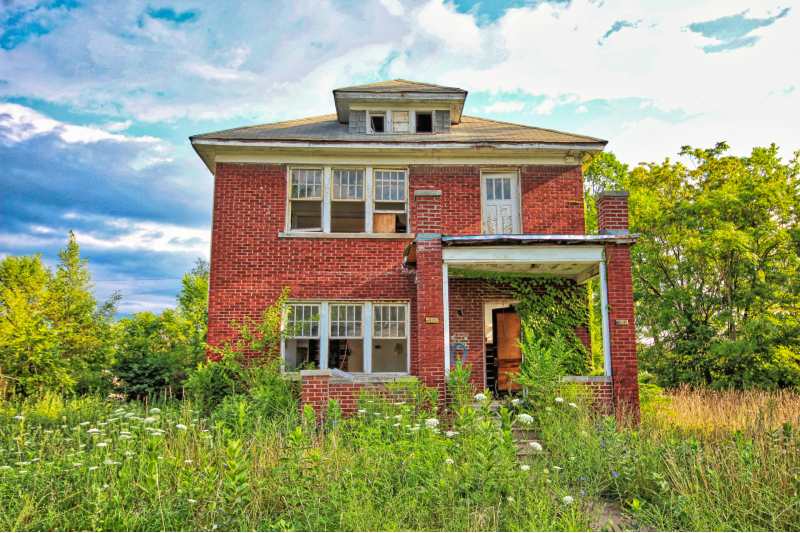Federal parliament is moving to double penalties for foreign investors who leave their residential properties unoccupied.
The Foreign Acquisitions and Takeovers Fees Imposition Amendment Bill, now before parliament, is targeting foreign investors who have purchased homes since May 2017 and left them vacant – a practice known as ‘land banking’.
The amendments would see penalties of $169,000 and upwards and are designed to tackle Australia’s critical shortage of rental properties.
The bill was first announced in late 2023.
How many vacant homes are there in Australia?
The 2021 census found there were more than one million “empty” homes in Australia on Census night, around 10% of the country’s housing stock.
The figure includes holiday homes, homes being renovated, and those up for sale or awaiting transfer.
It’s unclear how many of Australia’s vacant residential properties are foreign owned although the latest Australian Taxation Office data shows foreign investors purchased less than 1% of established homes in the 2021-22 tax year.
The ATO raised about $5 million in foreign investor vacancy fees during the period.
ABS lending data indicates there was $2.32 billion in new home loans written to non-residents in 2023, for an average value of just over $687,000, however this doesn't encompass foreign investors who bought outright, but also encompasses those who bought while working in Australia.
The Bill also proposes tripling foreign investment fees for the purchase of established dwellings, designed to push overseas buyers towards investing in new housing developments.
Minister for Housing Julie Collins is touting the Bill as part of a wider government plan to address housing affordability and supply issues.
However, many pundits are saying the amendments will do little to boost the number of properties in the rental market.
Currently, foreign investment is open only to building new homes.
“Foreign investors build new homes, they don’t live in them, then cannot take them out of the country and are central to addressing the shortage of housing in Australia,” Housing Industry Australia chief economist Tim Reardon said in December.
Global fight against empty homes
At state level, Victoria has tried to tackle the issue of vacant dwellings in Melbourne by imposing a tax of 1% of the value of homes that have been unoccupied for more than six months.
By January 2025, this will be extended to undeveloped land and empty properties around the state, including regional areas.
Some cities around the world have similar “empty homes” laws including Vancouver, Paris, and parts of Spain.
The Canadian province of British Columbia introduced a vacancy tax in 2018 to address its housing crisis which the government blamed on speculators driving up prices and then leaving their properties empty.
An analysis by the province’s Ministry of Finance found the move helped to add around 20,000 dwellings to the long-term rental market in Vancouver and saw a decline in foreign buyers.
Overseas investors are charged more for vacant properties than Canadian citizens.
Is negative gearing back on the agenda?
In other moves in Canberra, the spectre of changes to negative gearing is (again) in the wind with the Greens and key crossbenchers expected to use the current tax concessions as a bargaining tool in exchange for support of the government’s Help to Buy housing scheme.
At the weekend, Treasurer Jim Chalmers reaffirmed the government was not considering any changes to current negative gearing or capital gains tax arrangements.
But it’s widely believed the Greens will propose limiting negative gearing to a single investment property and seek a marked decrease in the current capital gains tax discount for property investors.
Negative gearing is a tax concession that allows property investors to buy a rental property using borrowed money then deduct any loses on their investment to reduce their personal income tax.
On top of that, property investors currently receive a 50% discount on profits from selling if they have held the asset for a minimum of one year.
The Greens are reported to be pushing to reduce that discount to a more modest amount, linked to the Consumer Price Index.
Help to Buy scheme held hostage?
The government is aiming to get its Help to Buy legislation through this session of parliament and is hoping to have it up and running this year.
The scheme is designed to subsidise low- and middle-income families to buy their first homes with the federal government owning equity of 30% for an established home or 40% for a new build.
This would mean homeowners would be up for lower deposits and smaller loans for their share.
The Greens have previously used their balance of power in the Senate to stall the government’s $10 billion Housing Australia Future Fund.
On that occasion, the government ended a months-long stalemate by agreeing to extra funding for public and community housing but did not concede to Greens' demands for a national cap or freeze on rental increases.
Image by Daniel Tuttle on Unsplash

Ready, Set, Buy!
Learn everything you need to know about buying property – from choosing the right property and home loan, to the purchasing process, tips to save money and more!
With bonus Q&A sheet and Crossword!

